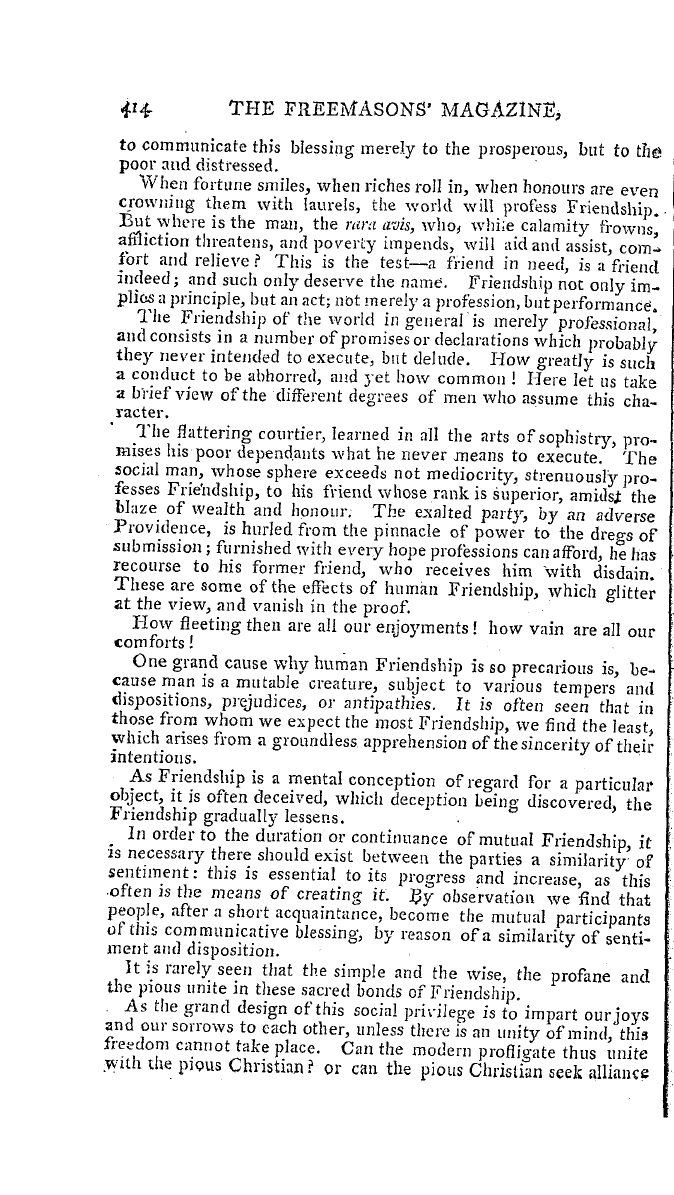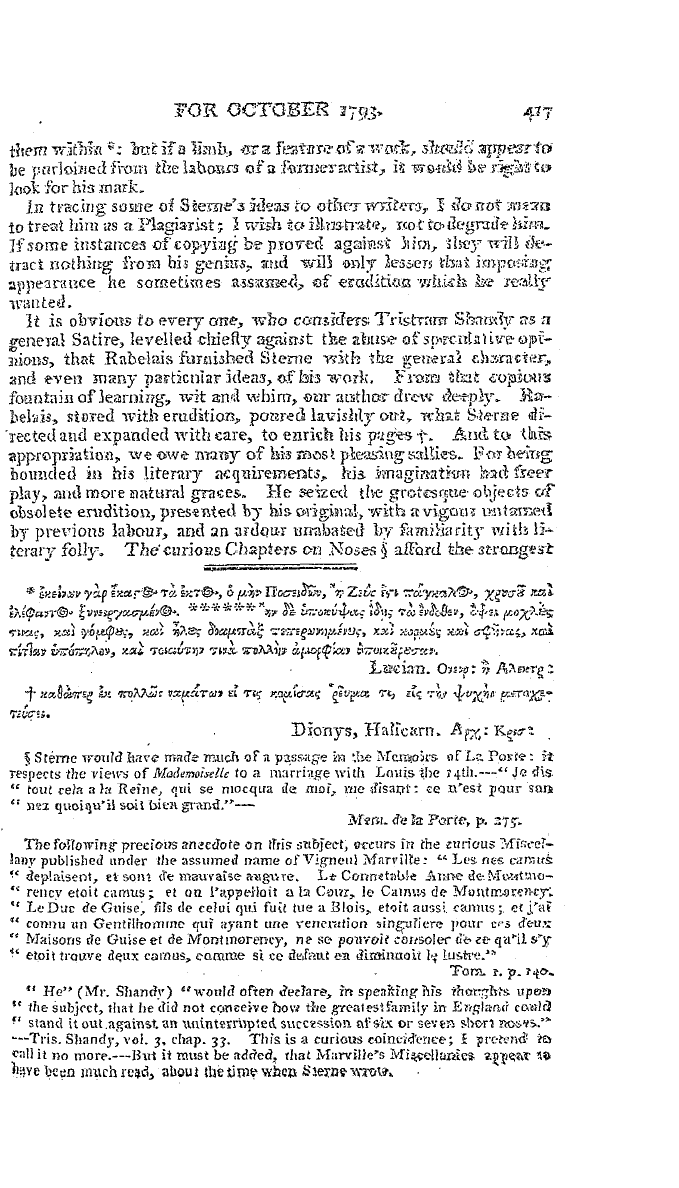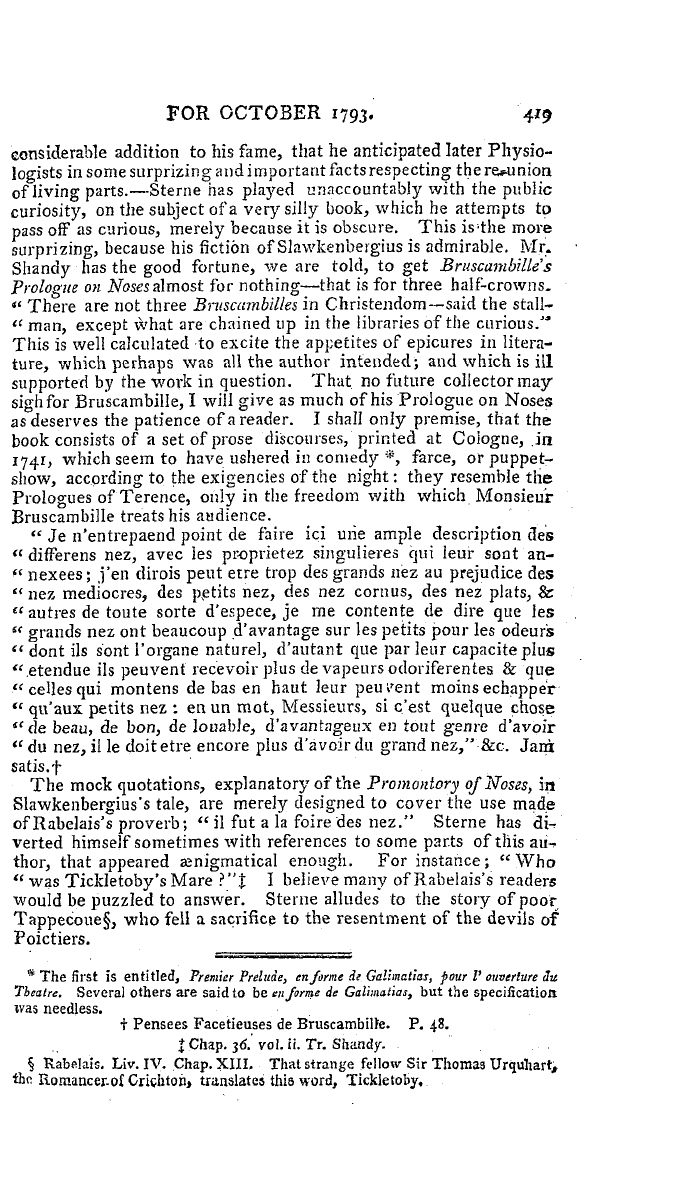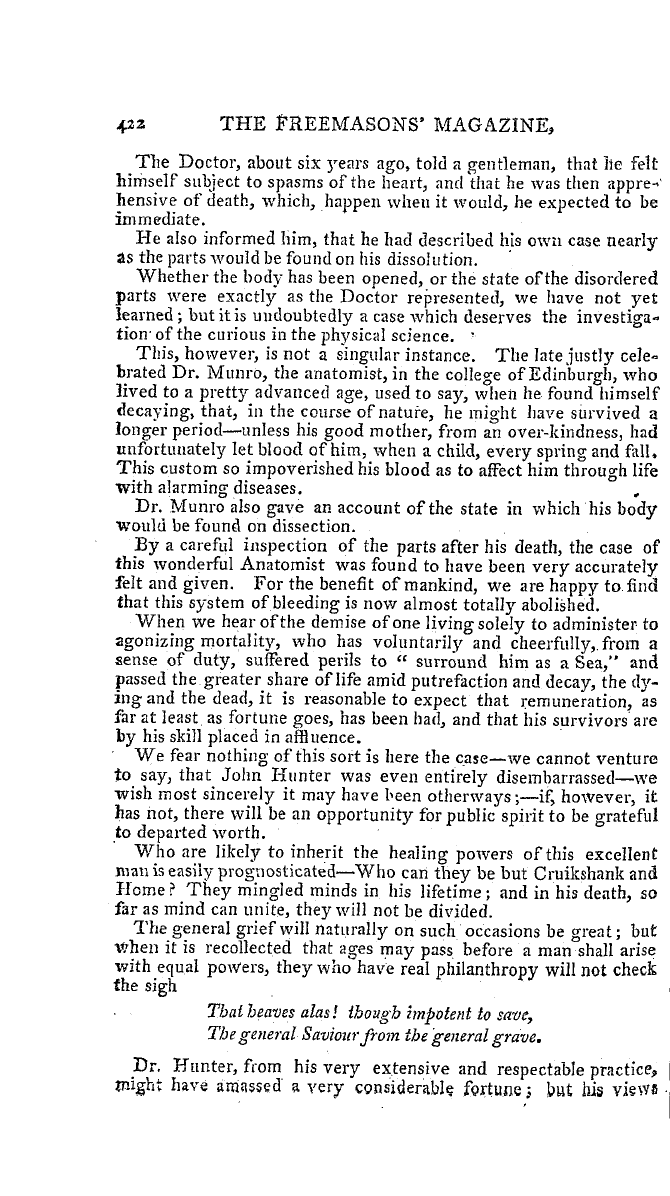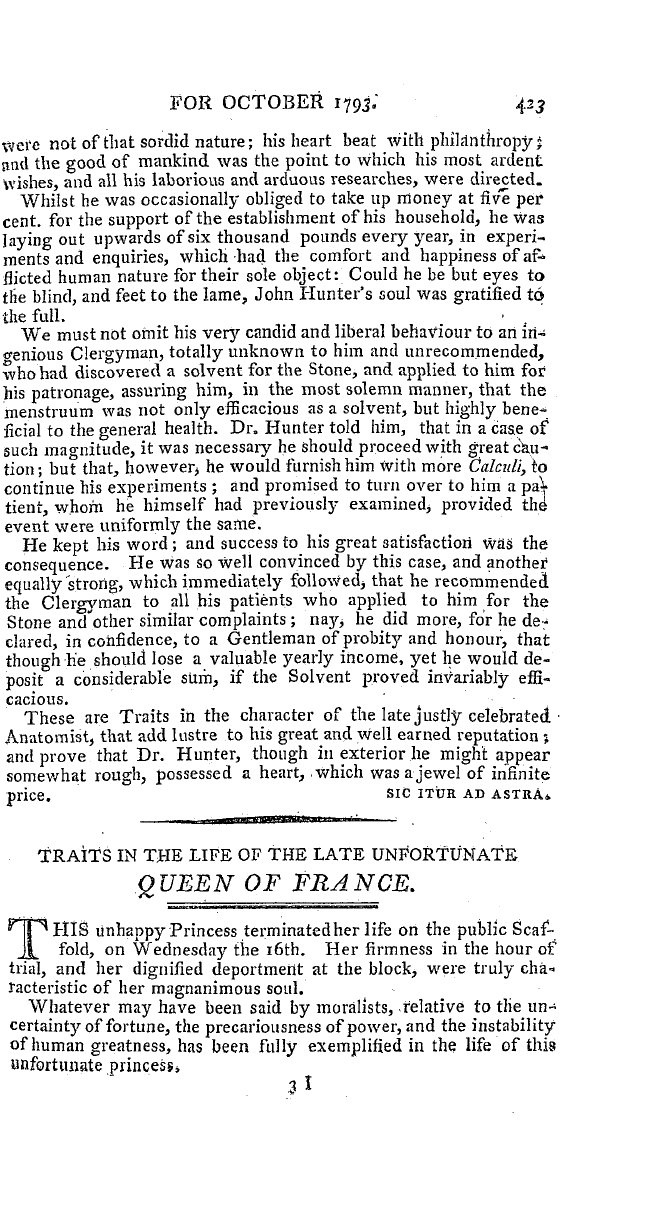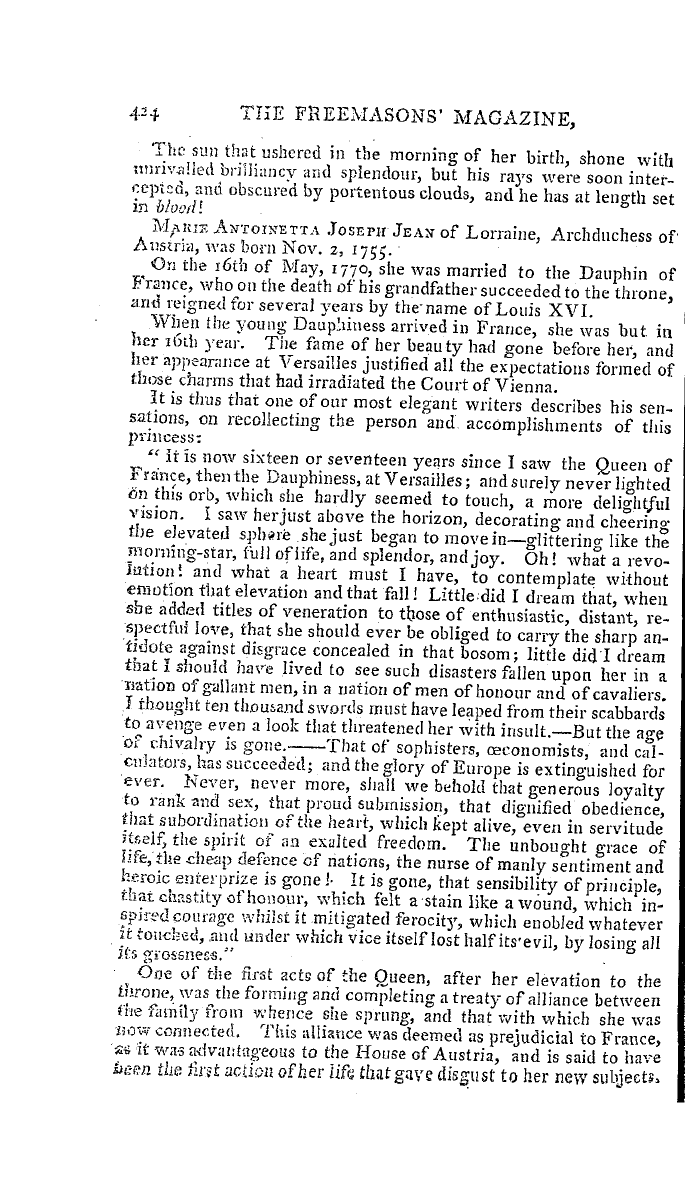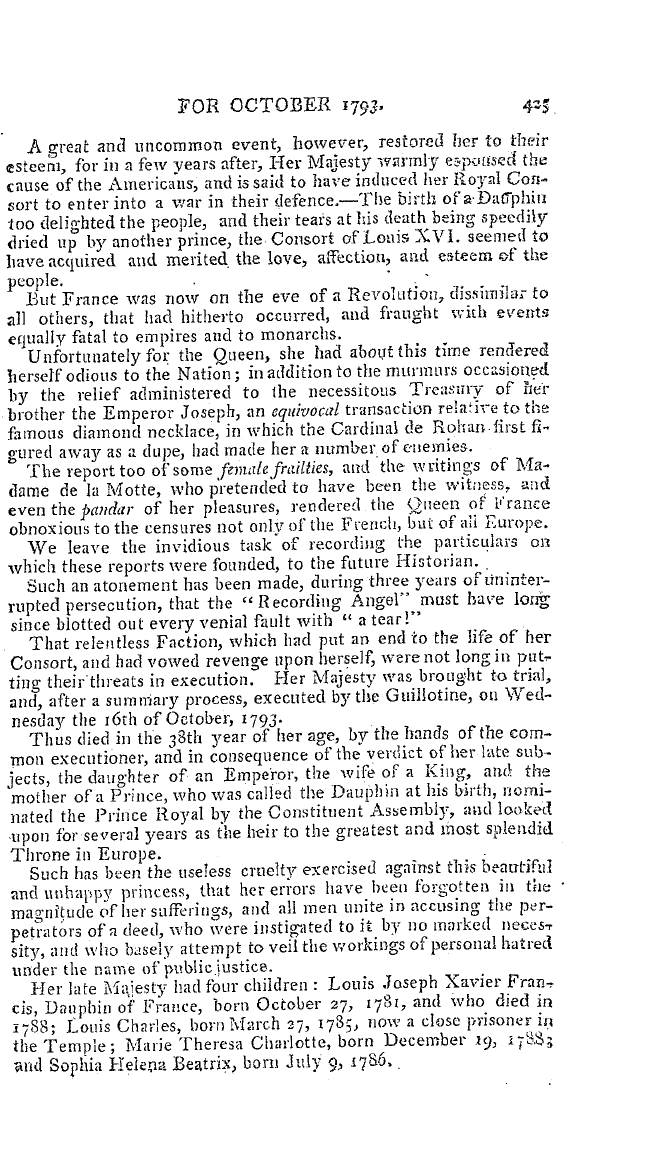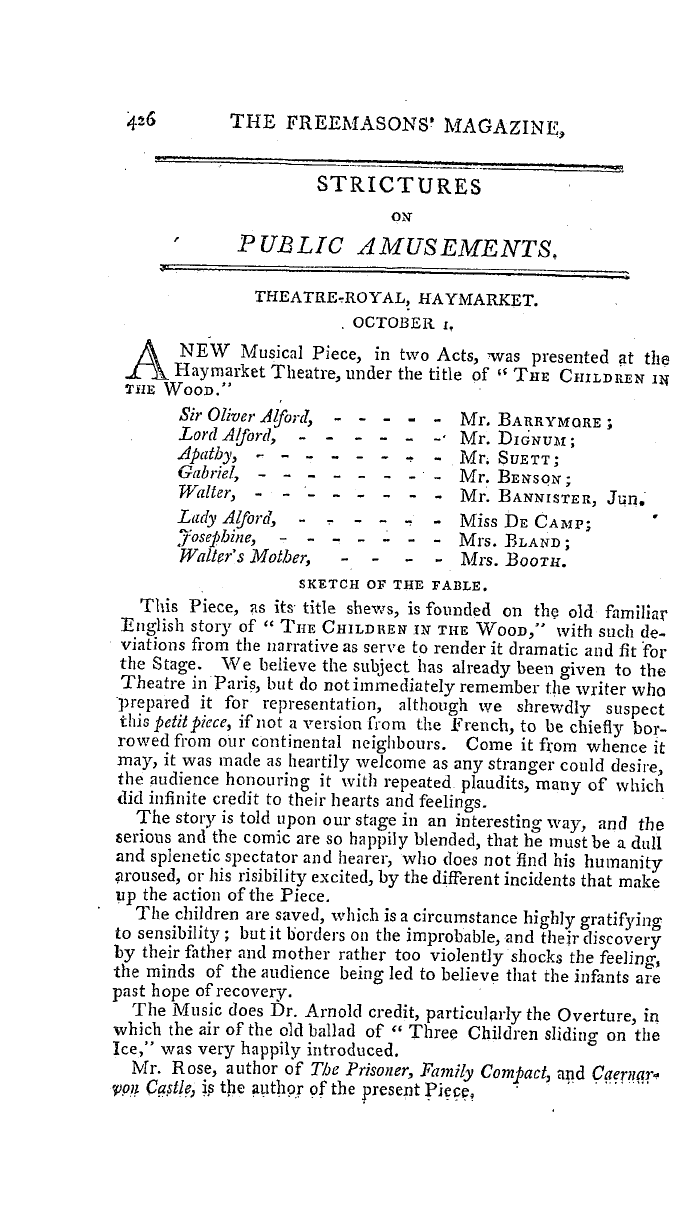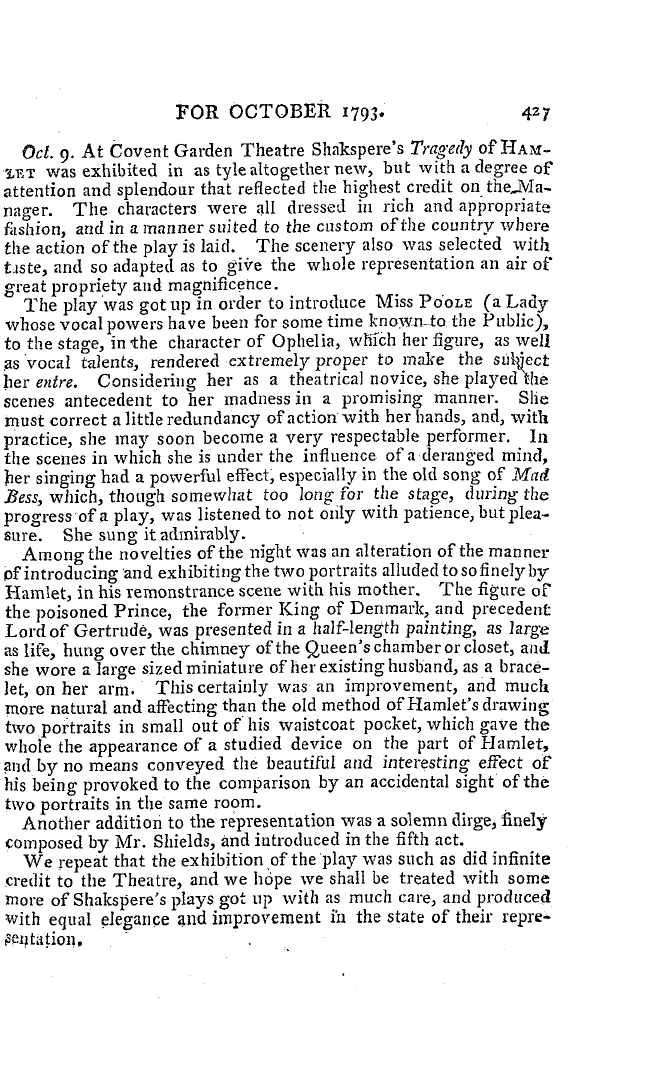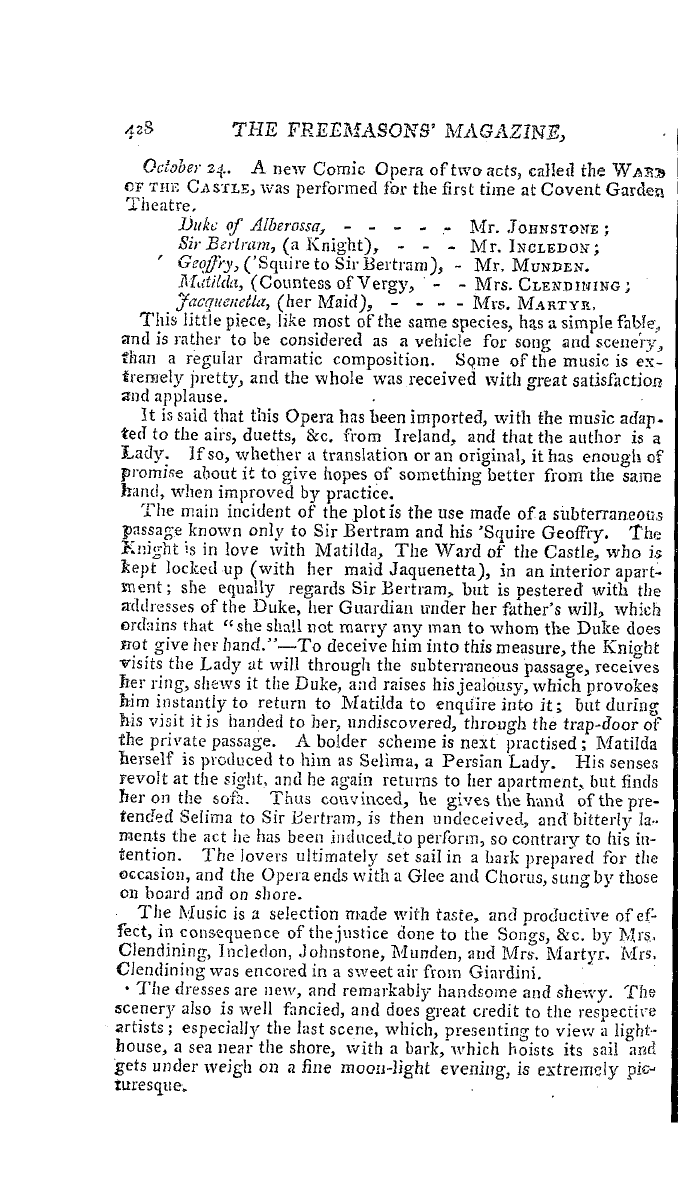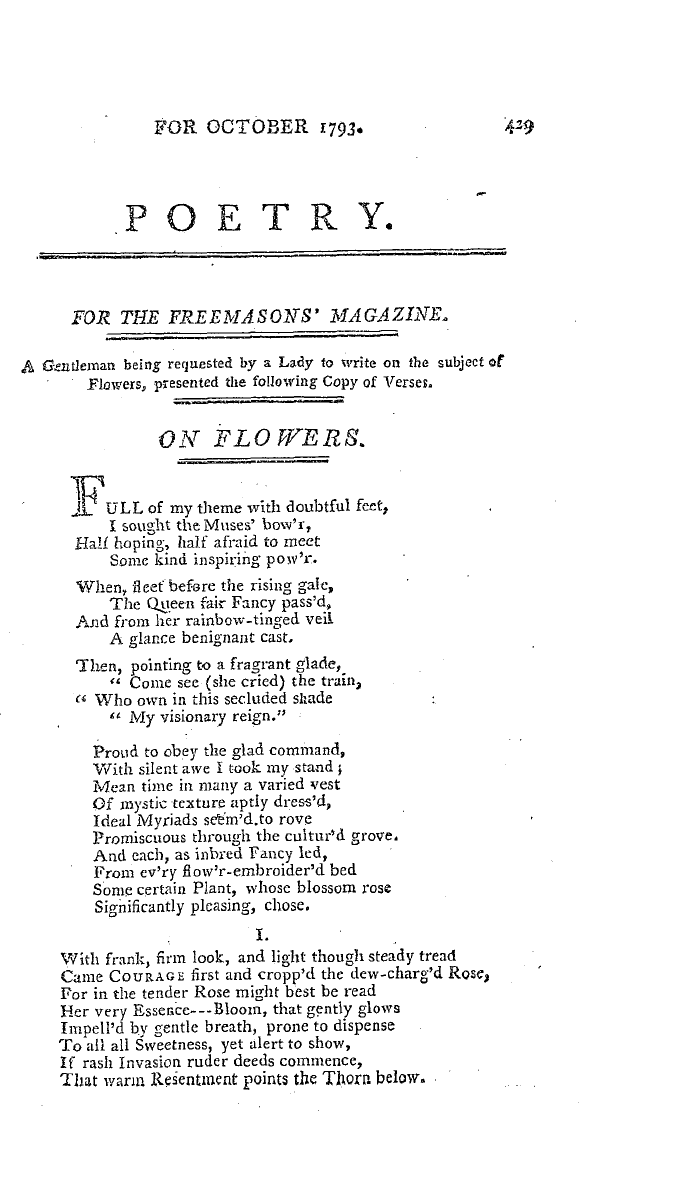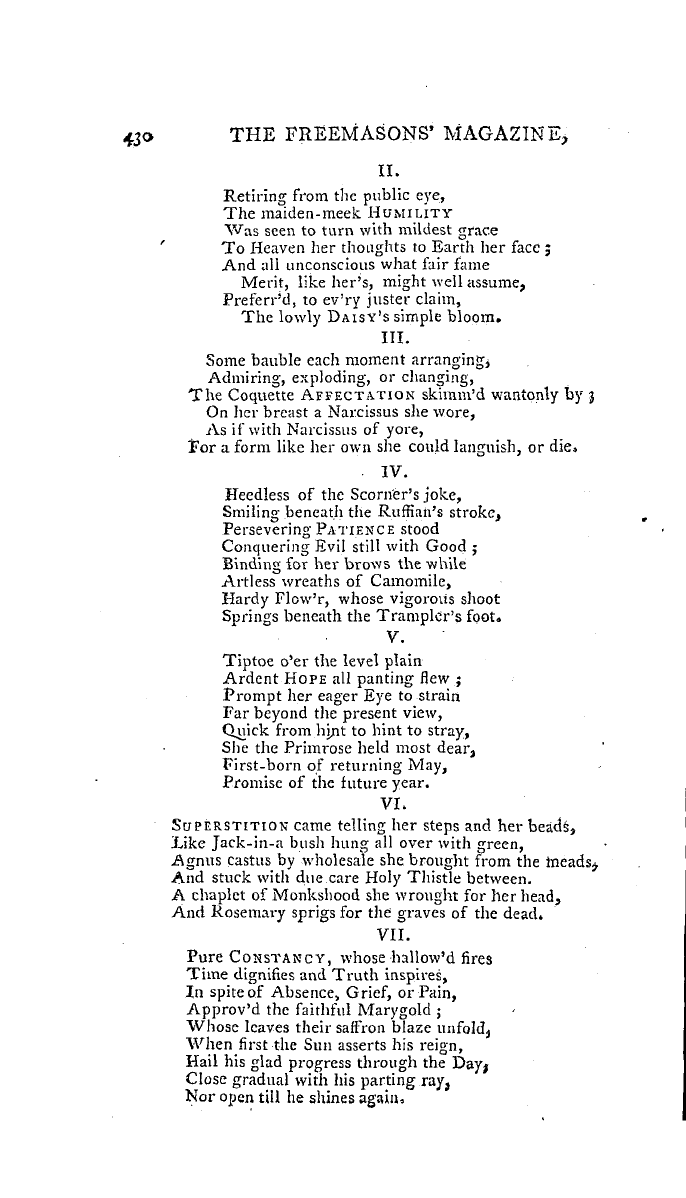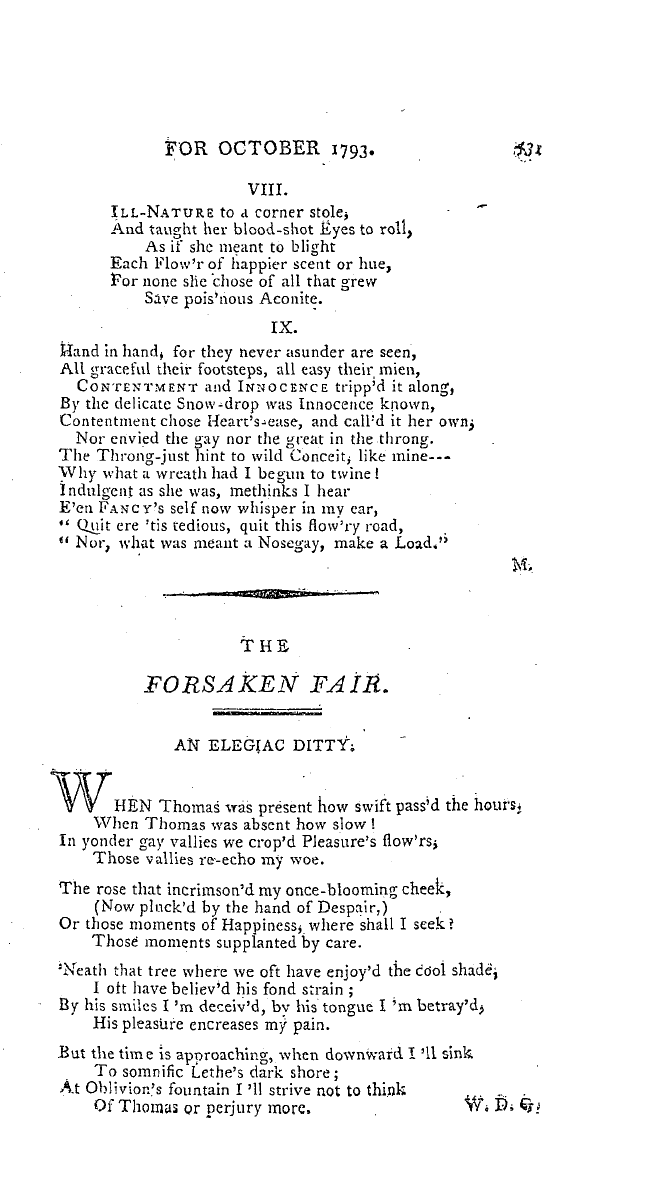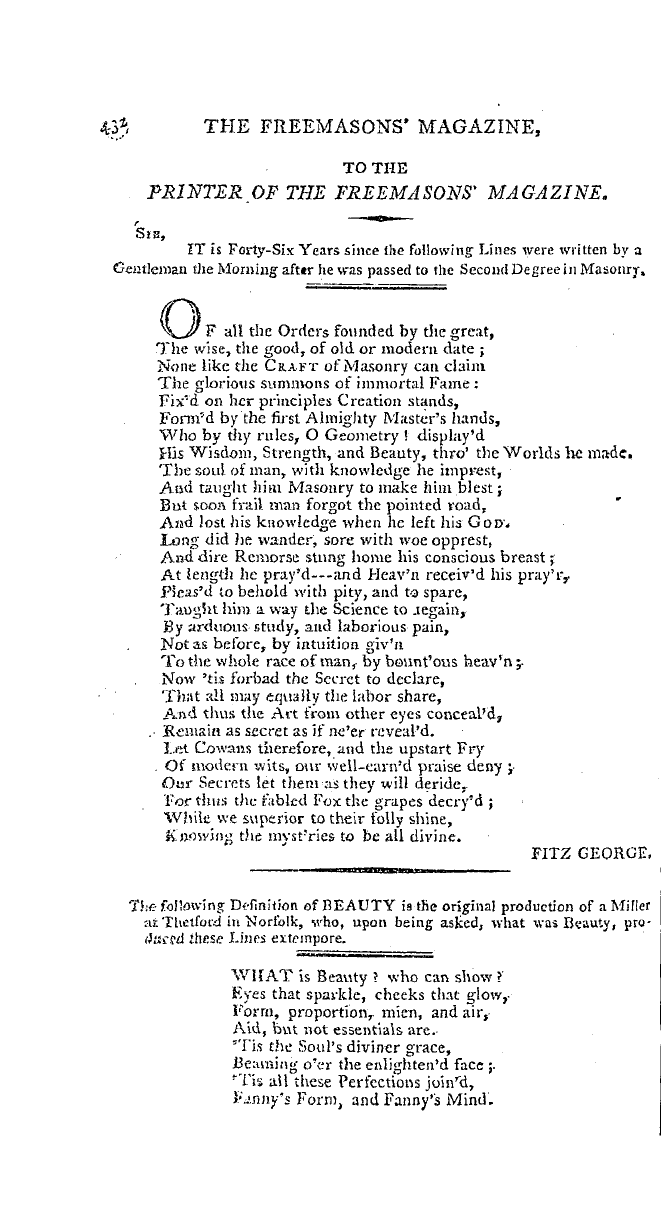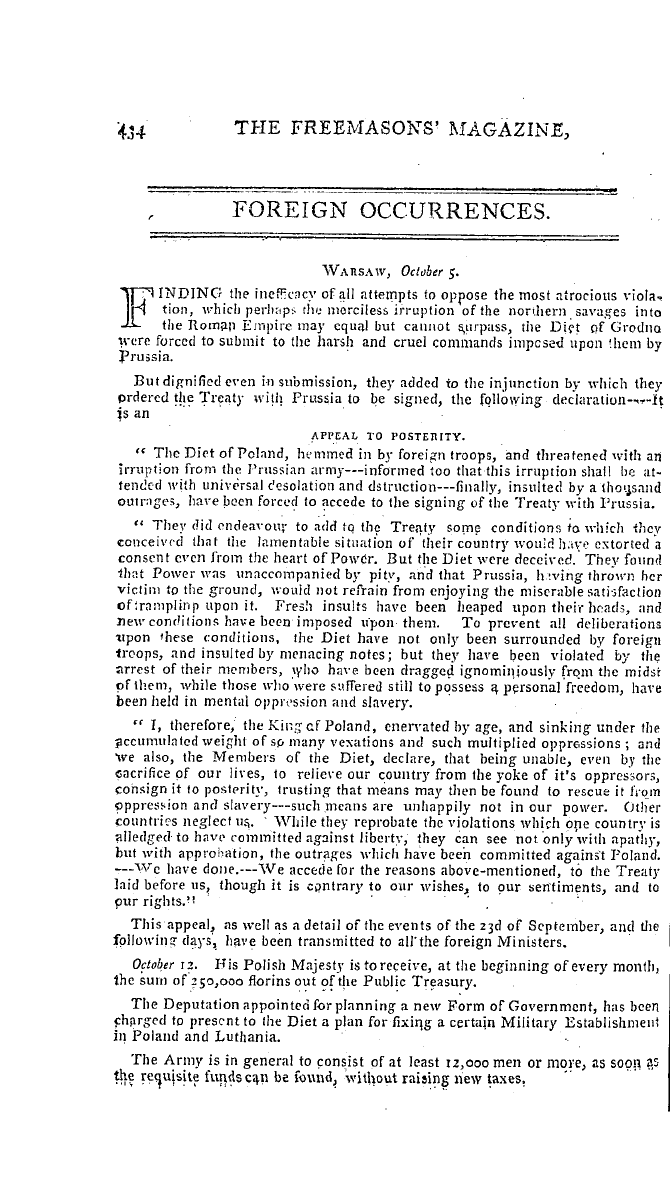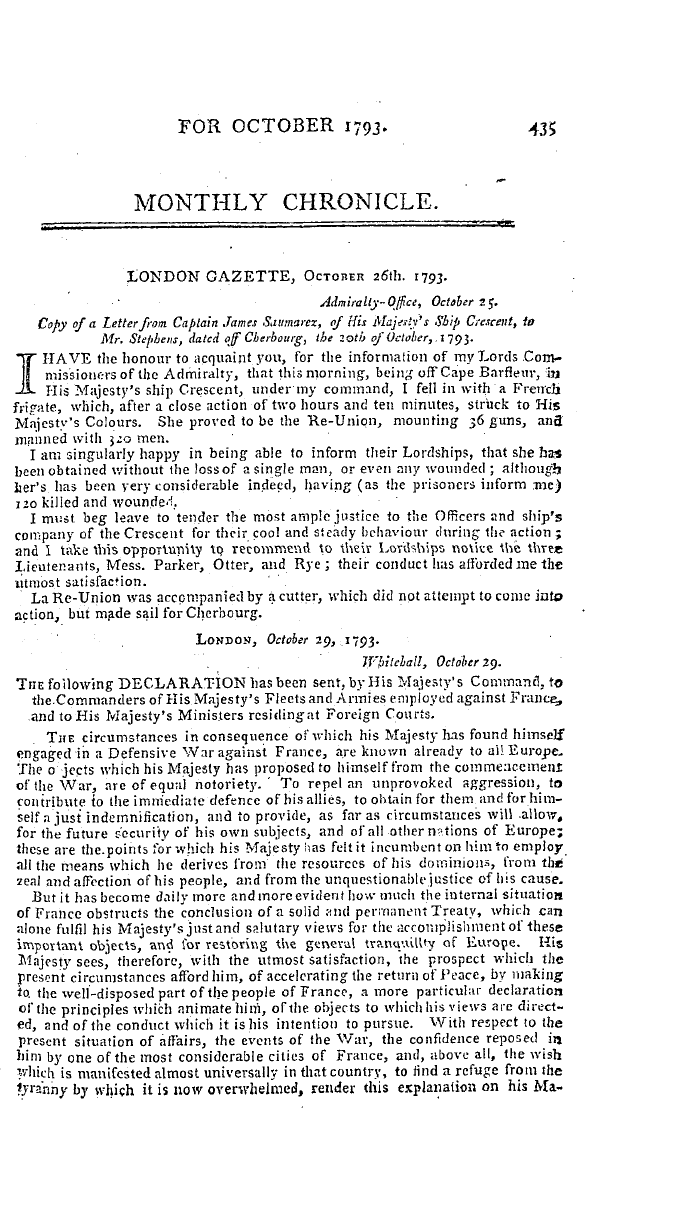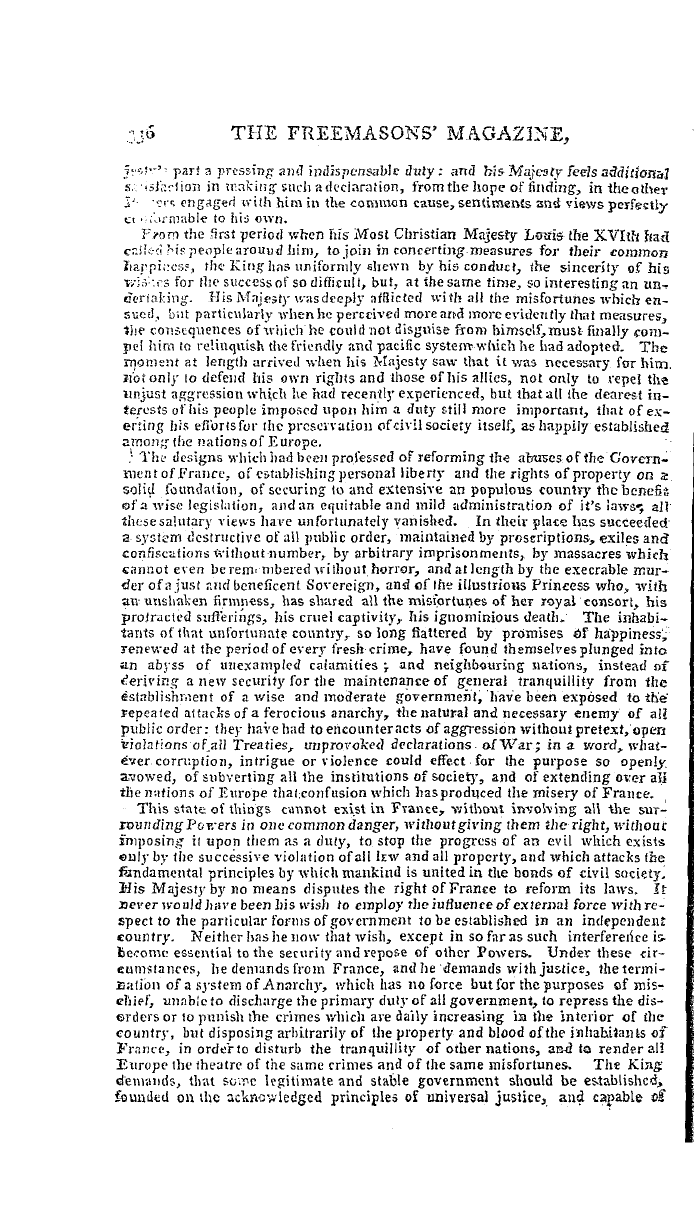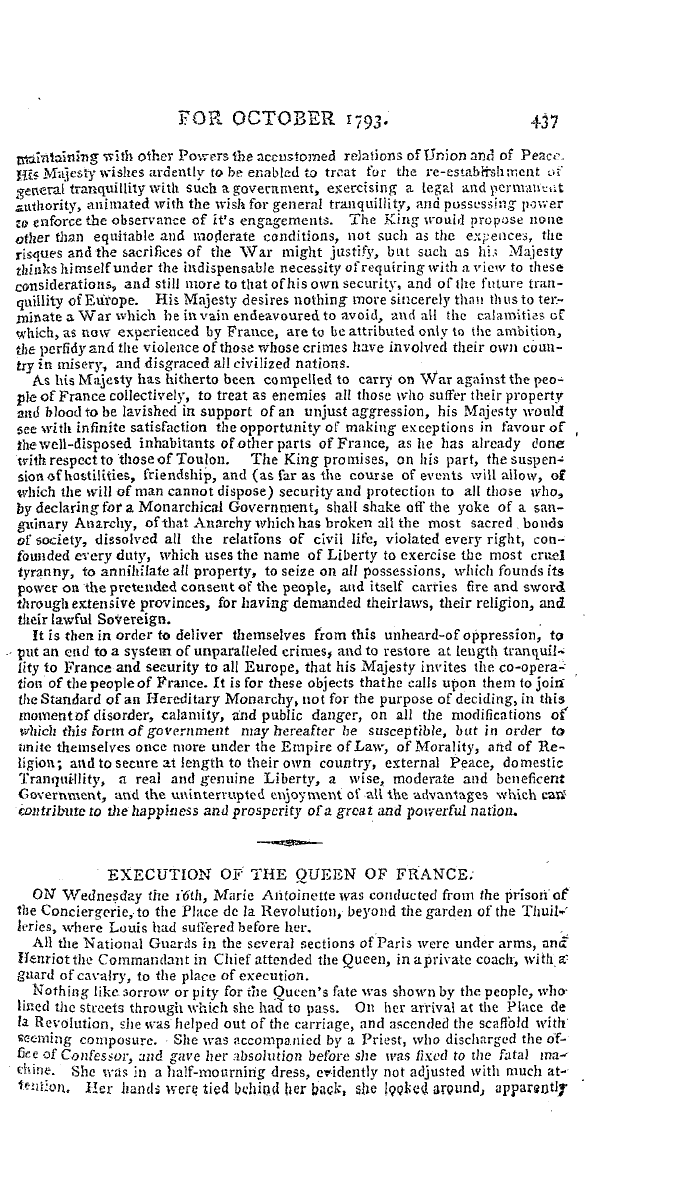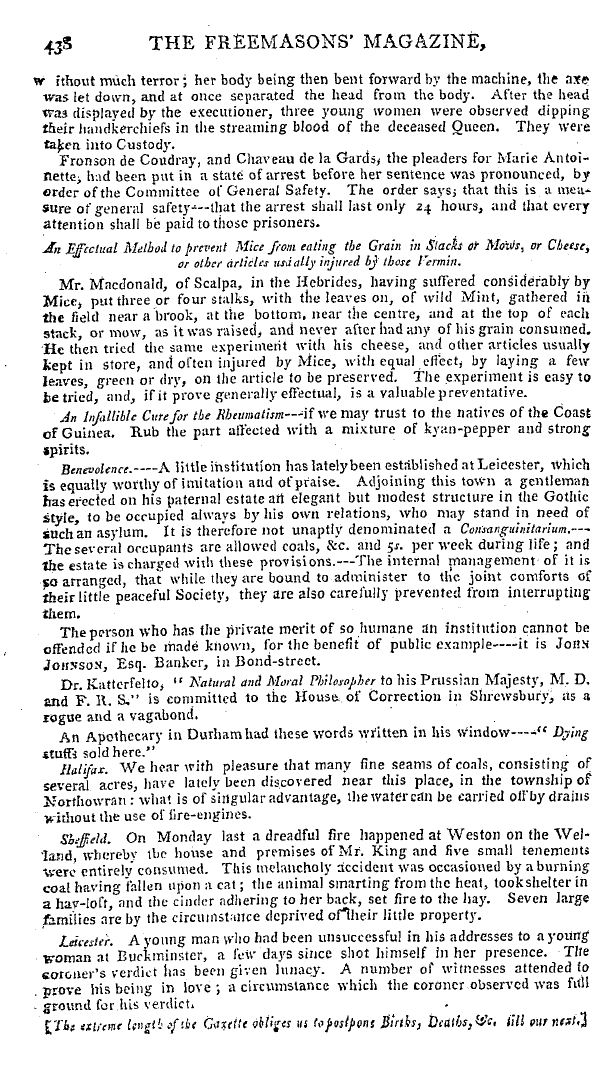-
Articles/Ads
Article THE GENERAL HISTORY OF CHINA: ← Page 4 of 5 →
Note: This text has been automatically extracted via Optical Character Recognition (OCR) software.
The General History Of China:
posts and couriers to carry his orders ,, and those of the tribunals into the provinces . The Emperor defrays also the charges of all foreign ambassadors , from the day that they enter into his dominions until they go out of them . He " pays all the expence . of their tables , and when they are arrived at court lodges them in a palacewherefor a token of
, , friendship , he sends them' every other . day dishes from his own table ; and sometimes , to sliew them a particular regard , he sends them extraordinary messes ., ] ; I do not mention the other expences which the Emperor is obliged to be at for public buildings , and the repairing of his palace ,, which , although of a different architecture from ours , yet is suitable
to the majesty of so great a Prince . The icfea y ^ hich I . have ' already given of it , in the beginning of this Work , may seem sufficient . for the reader , but I shall novy supply what is wanting there by a . more particular description of it , without repeating what has been said before , which has been done by one of the missionaries , who had the honour to be admitted into the « Emperor ' s presence , and to salute him even in his
apartment , :-As , said he , the southern gate is never opened but for the Emperor , we came in by the eastern gate , which leads into a vast court southward with regard to the palace ; this court is square , and at each angle there is a large-oblong building with a doubleroof , and
three gates like those of cities- ; the length of this-ceurf from north to south is upwards of 200 geometrical paces , and the length across is about-the same : It is paved with large bricks and the walks laid with large flat . stones : before we entered into another court we , passed a canal th ' at . was almost dry ,, over one of the six white marble bridges , which are laid across this canal that runs east and westover against five gates that are vaultedon which is a- large
, , building with a platform and a double roof ,, whose thickness is upwards of twenty geometrical paces . -At each end of the bridge that leads to the middle gate are two large round columns of white marble , upon a large pedestal of white marble , surrounded with balisters of the same , as also two great lions between seven and eight feet high upon their basis , which seem as if they had been cut
out of one stone . The gates of this second court , of which I am now speakings face the north ; the length of it is but 100 paces , and about fifty in breadth ; at the entrance of this court there are two other white marble columns , adornttd with dragons in relievo , with two small wings below a chapiter which is flat and wide . From thence you enter into a third courtwhich is double the
, length of this last , but a little wider ; it has five gates the same asi in the two former , with a building on them of the same structure . These gates are very thick , and covered with plates of iron fastened on with brass nails , whose heads are bigger than a man ' s list ; all the buildings of the palace are placed on bases of the height of a J $
Note: This text has been automatically extracted via Optical Character Recognition (OCR) software.
The General History Of China:
posts and couriers to carry his orders ,, and those of the tribunals into the provinces . The Emperor defrays also the charges of all foreign ambassadors , from the day that they enter into his dominions until they go out of them . He " pays all the expence . of their tables , and when they are arrived at court lodges them in a palacewherefor a token of
, , friendship , he sends them' every other . day dishes from his own table ; and sometimes , to sliew them a particular regard , he sends them extraordinary messes ., ] ; I do not mention the other expences which the Emperor is obliged to be at for public buildings , and the repairing of his palace ,, which , although of a different architecture from ours , yet is suitable
to the majesty of so great a Prince . The icfea y ^ hich I . have ' already given of it , in the beginning of this Work , may seem sufficient . for the reader , but I shall novy supply what is wanting there by a . more particular description of it , without repeating what has been said before , which has been done by one of the missionaries , who had the honour to be admitted into the « Emperor ' s presence , and to salute him even in his
apartment , :-As , said he , the southern gate is never opened but for the Emperor , we came in by the eastern gate , which leads into a vast court southward with regard to the palace ; this court is square , and at each angle there is a large-oblong building with a doubleroof , and
three gates like those of cities- ; the length of this-ceurf from north to south is upwards of 200 geometrical paces , and the length across is about-the same : It is paved with large bricks and the walks laid with large flat . stones : before we entered into another court we , passed a canal th ' at . was almost dry ,, over one of the six white marble bridges , which are laid across this canal that runs east and westover against five gates that are vaultedon which is a- large
, , building with a platform and a double roof ,, whose thickness is upwards of twenty geometrical paces . -At each end of the bridge that leads to the middle gate are two large round columns of white marble , upon a large pedestal of white marble , surrounded with balisters of the same , as also two great lions between seven and eight feet high upon their basis , which seem as if they had been cut
out of one stone . The gates of this second court , of which I am now speakings face the north ; the length of it is but 100 paces , and about fifty in breadth ; at the entrance of this court there are two other white marble columns , adornttd with dragons in relievo , with two small wings below a chapiter which is flat and wide . From thence you enter into a third courtwhich is double the
, length of this last , but a little wider ; it has five gates the same asi in the two former , with a building on them of the same structure . These gates are very thick , and covered with plates of iron fastened on with brass nails , whose heads are bigger than a man ' s list ; all the buildings of the palace are placed on bases of the height of a J $




























































